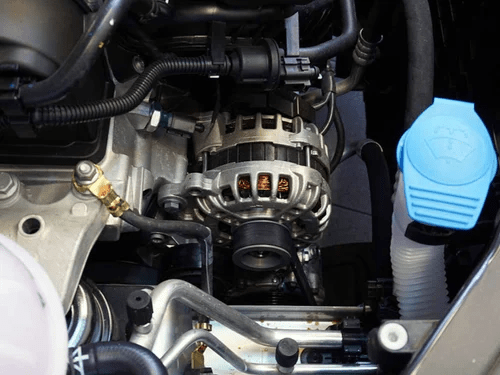Introduction
Wheels and tires are crucial components of any vehicle, responsible for ensuring a smooth and safe ride. Understanding the details of wheels and tires is essential for both car enthusiasts and everyday drivers. From size and material to tread patterns and tire types, this comprehensive guide will provide you with all the information you need to make informed decisions when it comes to wheels and tires.
I. Wheels: The Foundation of Your Vehicle
When it comes to your vehicle, wheels are the foundation upon which everything else rests. They provide support, stability, and traction, ensuring a smooth and safe ride. Understanding the details of wheels is crucial for selecting the right ones that not only fit your vehicle but also meet your performance and aesthetic preferences. Let’s explore some key aspects of wheels:
A. Wheel Size and Fitment:
Understanding Wheel Diameter and Width:
The diameter of a wheel refers to the distance across the center, usually measured in inches. It directly influences the overall height of the tire and affects the vehicle’s handling and appearance. Wheel width is the distance between the inner and outer edges, also measured in inches. It determines the tire’s sidewall shape and the overall contact patch with the road.
Offset and Backspacing Explained:
Offset refers to the distance between the wheel’s mounting surface and its centerline. It determines how far in or out the wheel sits within the wheel well. Positive offset means the mounting surface is closer to the outside of the wheel, while negative offset places it closer to the inside. Backspacing, on the other hand, measures the distance from the mounting surface to the wheel’s inner edge. Both offset and backspacing are critical for proper wheel fitment and clearance.
B. Wheel Construction:
Steel Wheels: Steel wheels are commonly found on entry-level vehicles and trucks. They are durable, cost-effective, and resistant to damage from curbs or potholes. However, they tend to be heavier and offer less visual appeal compared to alloy wheels.
- Alloy Wheels: Alloy wheels, also known as aluminum wheels, are lighter and more visually appealing than steel wheels. They can enhance the vehicle’s handling and fuel efficiency. Alloy wheels are available in various finishes and designs, making them a popular choice for many drivers. They are, however, more prone to damage from impacts and require careful maintenance.
- Hostile Forged Wheels: Hostile forged wheels are the pinnacle of wheel construction. They are made by compressing and shaping a solid block of aluminum or other metals under high pressure. This process results in a wheel that is incredibly strong, lightweight, and precisely engineered for high-performance applications. Hostile forged wheels are commonly seen on sports cars and luxury vehicles.
Understanding the differences in wheel size, fitment, and construction is essential for choosing the right wheels for your vehicle. Consider your driving preferences, vehicle type, and desired aesthetics when making your selection. Upgrading to a higher-quality wheel can significantly enhance your driving experience.
II. Tires: Traction, Comfort, and Safety
Tires are the only point of contact between your vehicle and the road, making them a critical component for traction, comfort, and safety. Choosing the right tires can greatly impact your vehicle’s performance, fuel efficiency, and handling characteristics. Let’s delve into the details of tires:
A. Tire Size and Markings:
Decoding Tire Size Notation:
Tires are labeled with a standardized format, such as P225/50R17. The “P” indicates it’s a passenger car tire, followed by the width in millimeters (225). The aspect ratio (50) represents the height of the sidewall as a percentage of the tire’s width. “R” indicates a radial tire construction, and the final number (17) signifies the diameter of the wheel the tire is intended to fit.
Load Index and Speed Rating:
Load index indicates the maximum weight a tire can support at the specified inflation pressure. It’s represented by a numerical value, and higher numbers denote a higher load-carrying capacity. Speed rating indicates the maximum speed a tire can handle safely. It is denoted by a letter, with higher letters representing higher speed ratings.
B. Tire Types:
All-Season Tires: These tires are designed to provide a balanced performance in various weather conditions, including dry and wet surfaces. They offer good traction, longevity, and a comfortable ride. All-season tires are suitable for everyday driving.
- Summer Tires: Summer tires prioritize performance and grip in warm and dry conditions. They have a tread pattern that enhances handling, cornering, and braking capabilities. However, they may not perform optimally in cold or snowy conditions.
- Winter Tires: Winter tires, also known as snow tires, are specifically designed for cold weather and snowy conditions. They have a tread pattern that provides excellent traction on snow and ice, improving braking and handling performance in low temperatures.
- All-Terrain Tires: These tires are designed for off-road and on-road driving. They offer a balance of off-road traction and on-road comfort. All-terrain tires have an aggressive tread pattern with larger tread blocks to enhance traction on various surfaces.
- Performance Tires: Performance tires are designed for sporty driving and high-performance vehicles. They offer enhanced grip, cornering stability, and responsive handling. These tires often have a low-profile design and specialized rubber compounds for increased traction.
Understanding the different tire types and their intended purposes will help you choose the right tires for your driving needs and the prevailing weather conditions in your area.
Tires play a significant role in your vehicle’s safety, performance, and comfort. Consider factors such as tire size, load index, speed rating, and the type of tire that suits your driving habits and environment. Regular tire maintenance, including proper inflation, rotation, and alignment, will maximize their lifespan and ensure optimal performance. Remember to consult with a tire professional or refer to your vehicle’s manual for specific tire recommendations.
III. Tire Tread Patterns: Enhancing Performance
Tire tread patterns are designed to provide traction and improve performance in various driving conditions. The tread pattern plays a crucial role in channeling water, maintaining grip, and enhancing stability. Let’s explore some common tire tread patterns and their benefits:
A. Symmetrical Tread Patterns:
Symmetrical tread patterns feature continuous ribs and grooves that are evenly spaced across the tire’s surface. These tires provide a smooth and quiet ride while offering good traction on dry roads. They are also known for their longevity and resistance to irregular wear. Symmetrical tread patterns are commonly found in all-season tires.
B. Asymmetrical Tread Patterns:
Asymmetrical tread patterns have different tread designs on the inner and outer halves of the tire. This allows for a combination of performance characteristics. The outer portion typically features larger tread blocks for improved handling and cornering stability, while the inner portion has smaller tread blocks to enhance water evacuation and traction on wet surfaces. Asymmetrical tread patterns provide a balance between performance and comfort.
C. Directional Tread Patterns:
Directional tread patterns have a V-shaped or arrow-like design that features deep grooves that point in a specific direction. These tires are optimized for wet traction by efficiently channeling water away from the tire’s contact patch. This helps reduce the risk of hydroplaning and improves stability. Directional tread patterns are commonly found in high-performance and summer tires.
D. Winter/Snow Tread Patterns:
Winter/snow tread patterns are specifically designed for enhanced traction on icy and snowy surfaces. They feature a large number of sipes (small slits) and block patterns with biting edges to provide grip in slippery conditions. These tires have wide grooves for increased snow and slush evacuation, ensuring better traction and improved braking performance in cold weather.
Choosing the right Special tire tread pattern depends on the weather conditions you frequently encounter and your driving preferences. For everyday driving in a variety of conditions, all-season tires with symmetrical or asymmetrical tread patterns are a popular choice. If you live in an area with significant snowfall, consider investing in dedicated winter/snow tires with specialized tread patterns.
Remember, proper tire maintenance, including regular inspection of tread depth and tire rotation, is crucial for ensuring optimal performance and safety. Monitor your tire’s tread wear indicators and replace them when the tread depth reaches the recommended minimum level.
IV. Proper Wheel and Tire Maintenance
Proper maintenance of your wheels and tires is essential for optimal performance, safety, and longevity. Neglecting maintenance can lead to uneven wear, reduced traction, and compromised handling. Here are some key maintenance practices to keep your products in top shape:
- Tire Pressure: Maintaining the correct tire pressure is crucial. Improper inflation can result in poor fuel efficiency, premature wear, and compromised handling. Regularly check your tire pressure using a reliable gauge and ensure it matches the manufacturer’s recommended specifications, which can usually be found on a sticker inside the driver’s door jamb or in the owner’s manual.
- Wheel Alignment: Wheel alignment ensures that all four wheels are properly aligned with each other and the vehicle’s specifications. Proper alignment prevents uneven tire wear, improves handling, and ensures straight tracking. Have your alignment checked and adjusted by a professional if you notice signs of uneven wear, pulling to one side, or steering wheel vibration.
- Tire Rotation: Regular tire rotation helps distribute wear evenly among all four tires. This practice extends tire life and promotes balanced handling. Follow the recommended rotation pattern provided by the vehicle manufacturer or consult with a tire professional for guidance. Typically, tire rotation is recommended every 5,000 to 8,000 miles (8,000 to 13,000 kilometers).
- Regular Inspections: Conduct visual inspections of your tires regularly. Look for signs of sidewall damage, bulges, cuts, or any foreign objects embedded in the tire. Check the tread depth using a tread depth gauge or the built-in tread wear indicators. Replace tires that have worn beyond the recommended tread depth to maintain proper traction and safety.
By practicing these maintenance routines, you can ensure that your wheels and tires perform optimally, provide adequate traction, and offer a safe driving experience. If you are unsure about any maintenance procedure or notice any irregularities, consult with a professional tire technician for guidance and assistance. Remember, proactive maintenance is key to maximizing the lifespan and performance of your wheels and tires.
V. Upgrading Your Wheels and Tires
Upgrading your wheels and tires can transform the look and performance of your vehicle. Whether you’re looking to enhance the aesthetics or improve handling and traction, here are some options to consider:
- Plus-Sizing: Plus-sizing involves increasing the diameter of your wheels while maintaining the overall tire diameter. This upgrade provides a more aggressive and sporty appearance. However, it’s crucial to ensure proper fitment, considering factors such as clearance, offset, and suspension compatibility. Consult with a knowledgeable professional to determine the appropriate plus-size options for your vehicle.
- Custom Wheels: Custom wheels allow you to personalize the look of your vehicle. They come in a wide variety of designs, finishes, and materials, allowing you to create a unique and distinctive appearance. Custom wheels can range from affordable options to high-end hostile forged wheels, depending on your budget and preferences.
- Performance Tires: Upgrading to high-performance tires can significantly improve your vehicle’s handling, cornering, and braking capabilities. These tires often have a lower profile, stiffer sidewalls, and specialized tread compounds for increased grip and responsiveness. Performance tires are an excellent choice for driving enthusiasts or those seeking enhanced performance.
- Run-Flat Tires: Run-flat tires are designed to allow you to continue driving for a limited distance even after a puncture or loss of air pressure. These tires have reinforced sidewalls that provide support when the tire is deflated. Run-flat tires offer convenience and safety by eliminating the need for immediate tire changes or spare tires.
Before making any upgrades, consider your driving needs, preferences, and budget. Research different options, read customer reviews, and consult with professionals to ensure compatibility and the best fit for your vehicle.
Keep in mind that upgrading wheels and tires may also require adjustments to other components, such as suspension or braking systems. Professional installation and guidance are recommended to ensure proper fitment, performance, and safety.
Conclusion
Wheels and tires are not only functional components but also crucial for the performance, safety, and aesthetics of your vehicle. Understanding the details of products, including size, fitment, tread patterns, and maintenance, is essential for making informed decisions. Upgrading your wheels and tires can enhance your vehicle’s appearance, handling, and overall driving experience. Remember to consult with professionals, prioritize regular maintenance, and select the right components that align with your specific needs and preferences.






